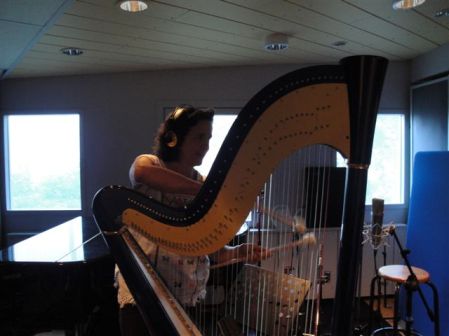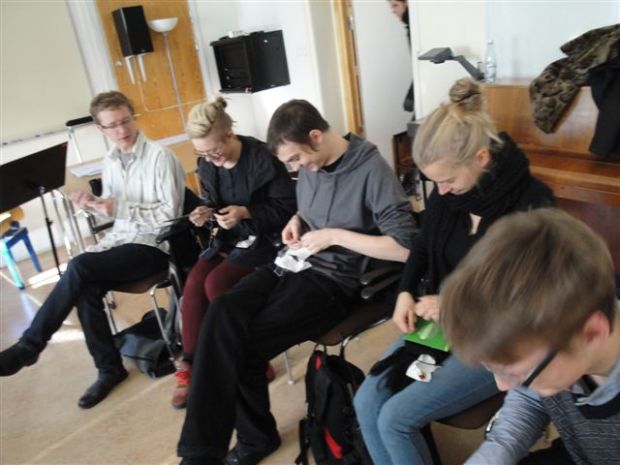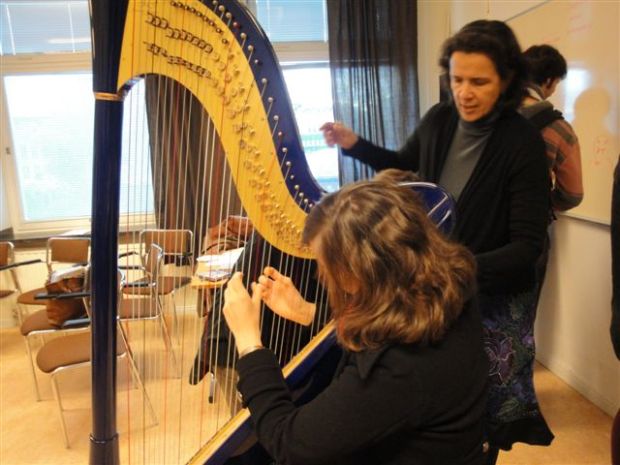RECORDING SESSIONS AT THE COMPOSERS WORKSHOP AND OTHER THOUGHTS
One of the teachers at the Kungliga Musikhögskolan i Stokcholm (Royal Conservatory in Stockholm) asked me how we Mexicans survive now with all the tragic violence threatening to spread into our daily lives.
Part of my reply was “we keep living while we are alive”, and for the rest of my answer, this issue still makes me wonder and wander about in thoughts. I might land somewhere along the texts I encountered in a new piece by the Mexican composer Marcela Rodríguez. Last weekend her “Requiem Mexicano” was premiered by the Orquesta Filarmónica de la Ciudad de México.
http://www.jornada.unam.mx/2010/11/12/index.php?section=cultura&article=a04n1cul
In the vocal parts for choir and soloists she combined fragments of texts by Carlos Fuentes and icnocuícatl (elegies) by Cauicapicque (Nahua poets) describing the destruction of their old city, Tenochtitlan (Mexico City), after the war with Hernán Cortés and the Spanish conquerors.
These Nahua elegies speak of disaster, about blood and worms invading the streets:
“Y era nuestra herencia una red de agujeros…”
“And our inheritance was a net of holes…”
This image captured my attention. It is painfully similar to what we read about lately in the newspapers. It made me think of how mankind for centuries has tried to the fill holes in such a net, the darker one in human history.
Here is one of the fragments that Marcela chose from Carlos Fuentes:
“Los hombres no poseen
un destino individual.
Son el resultado
de las funciones que cumplen”.
“Humans do not own
any individual destiny.
They are the result
of their functions”.
This also stayed in my thoughts, resonating with my belief in the significance of the duty that each of us has in life. As a teacher I must think about how to open the eyes of students regarding the vital importance of music-making in this violent contemporary world. As a player, I need to repeat loud and clear, again and again, that music is of vital importance. Now maybe more than ever.
As a teacher I smile while reading “Science Agenda”, a text in the Scientific American magazine (November 2010), where the board of editors explain why music is not to be something extra in education, as many governments think. They describe why music education needs to be kept going – for the benefit of our brains. They talk about how skills of concentration acquired by studying an instrument helps a student focus in other disciplines, while at the same time bringing the wonderful joy of producing music, of course. Music develops the brain and starting at an early age must be an educational goal, even with the tight budgets and circumstances of today. Statistics report that less young people are studying music nowadays. Then, who will fill the holes in that social net in the future? Who will fix the consequences of the current decisions on education?
These opinions, based on scientific analysis, have to do with the functions we ought to fulfill as players and teachers. We are part of the common destiny of the people around us.
This is one reason why I enjoyed very much to work with the young composers in Stockholm, just as I have done for a long time back home.
Now I’m sharing pictures from the second part of my workshop for composers, and I do so thinking about that science article I just read and mentioned here. It is called “Hearing the Music – Honing the Mind”. In the recording studio in Stockholm composers tried their ideas (for honing the mind), listening to the harp with which I was trying to connect to their inspiration. Some of them wanted sounds recorded as material for electronic or electro-acoustic music, others were interested in trying written sections of music that might at some point be transformed into new pieces that I hope to play soon. It was a nice challenge for me to spend time with each and every one of them, different personalities, different backgrounds, different minds and ideas about music. It was stimulating for me to try to respond with congruence and make suitable suggestions, hoping they would find them useful in their continued creative process.
Many thanks to all of you, wonderful brave young composers for sharing your ideas and putting your music in my hands. May life allow us to continue trying to fill the holes in the sparse net we have inherited – for our generation and for future ones. And once again, like the old Nahua poets mention in their dignified poetry, may we have new sprouts grow in our spirits.



































